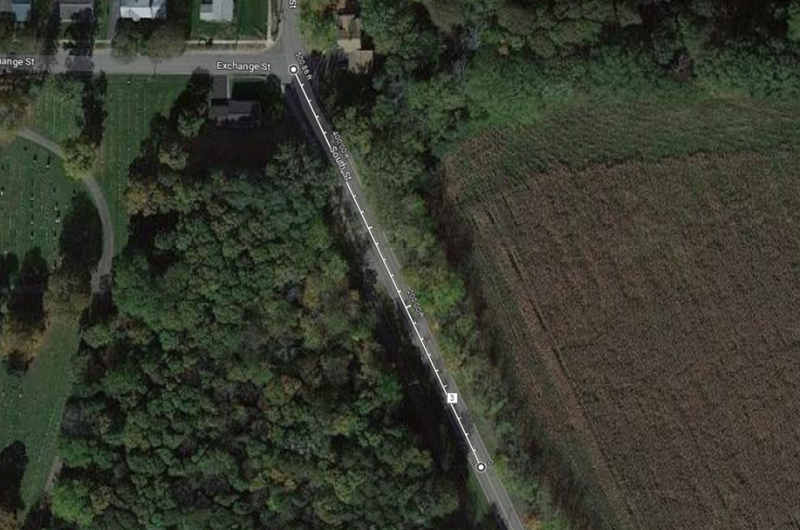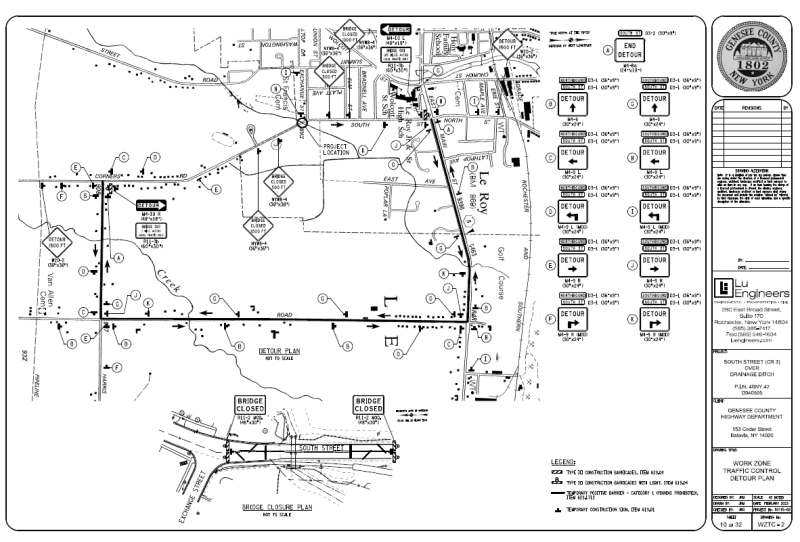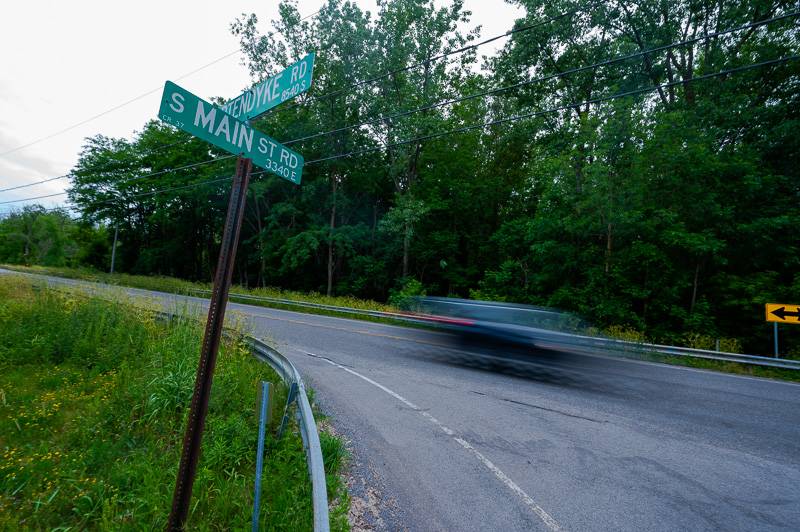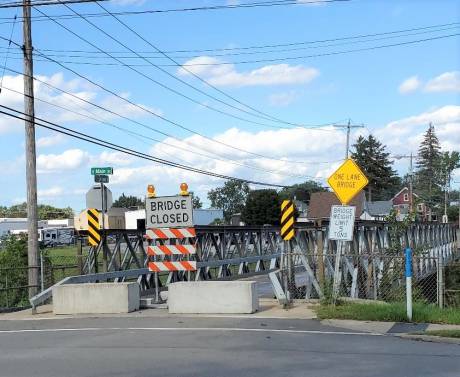What's in a name? Legislature to consider changes after 60 years

It took more than 60 years of evolving duties and departmental responsibilities plus the current trend of in-your-face social media posturing to bring about a change of title for Genesee County’s highway department, and it’s one whose time has come, Highway Superintendent Tim Hens says.
The shift from Highway to Public Works Department and revising Hens’ title to commissioner will go to a public hearing on July 24.
“I’ve always worried more about doing the job and not worrying about the title, but with the recent need to coordinate water emergency notifications as well managing a resurrected air show, I’ve noticed increased questions, especially in social media, as to why the highway superintendent is involved with water and airports,” Hens said. “It’s always been part of my job going back 25 years, but I think in order to quell some of the confusion, it’s prudent to rename the Highway Department to the Public Works Department.”
After a quick glance at other nearby counties -- Erie, Orleans and Niagara -- this isn't an uncommon title for the department or person leading the way. Albany County has a General Services department and Monroe County lists several divisions with no specific Public Works, such as Pure Waters and Parks departments. Tioga County does have a Public Works Department, and also lists Emergency Management Services (see below), so it seems as though there's no one established language that counties use for their various departments.
When Hens began in 1988, he was highway superintendent managing primarily the highways, bridges and fleet.
“Over the years, mostly in the early 2000s, duties were added: water, parks, airport, environmental health review and then we added facilities, I think, in 2016,” he said.
He oversees seven divisions, 57 full-time and 11 seasonal or part-time employees within the department, including highways and bridges; fleet management; engineering; facility management; parks and forestry; Genesee County Airport; countywide water; and environmental health, which means engineering reviews for water, septic, campgrounds and pools.
Water has become the monster to tackle — financially, physically and environmentally — as the county has enacted a three-phase water project, with Phase 3 estimated to cost $150 million, to shore up its infrastructure while also having to put out a yearly plea for residents to be thoughtful about water use due to potential shortages.
As for what he sees as levels of importance, “water seems to be number one for sure,” Hens said.
“So much depends on it — public health, economic development, etc.,” he said. “We can’t do much without water, so the emphasis has overwhelmingly been to advance expansions of the water supply system to match growth of demand and support new industries, including agriculture."
Officials still want folks to be mindful of their water usage, however, “we decided to hold off on any preemptive restrictions this year,” Hens said, “as we have made some improvements that are making a difference, and we don’t want to seem like the boy who cries wolf.”
He doesn’t believe the spray parks in Batavia and Le Roy will have to shut down as they did temporarily last year because those instances were due to mechanical failures at the water plant and a well simultaneously and during a very hot stretch of summer weather, he said. It was unusual, but it is an option when necessary. “If we have supply issues,” he said.
Hens was integrally involved in the resurrection of Wings Over Batavia Air Show, which was during Labor Day weekend in 2023, from early planning committees, special training, oversight, and implementation to wrap-up.
Though the air show is a privately funded event run mostly by volunteers, Hens serves to ensure “the county airport is safe, so the overall coordination and daily operations needed from the county to support the air show to make this happen will continue to be under my umbrella,” he said.
As for priorities, the water project remains a top one with Phase 2 water supply improvements in progress.
“We have many portions of this supply increase complete but are still working on upgrading four pump stations in the Monroe County Water Authority system that will bring more water to Genesee County. We continue to be delayed by supplier issues and long lead times as well as scheduling in the numerous shutdowns needed on an active pump station,” he said. “It’s a very complex project and has taken way longer than I could have imagined. The other priority is the design and funding of the Phase 3 water supply improvements, which are also critically needed. The biggest effort lately has been tracking down grant funding opportunities so that Genesee County can move the project ahead with outside help rather than asking county residents to pay more water surcharge to support the development.”
That doesn’t end his list of county projects, as there’s a long list that includes many bridge replacements across the county.
“There are currently 13 bridges under various levels of construction and design,” he said. “We’ve been very successful in obtaining both federal and state aid to move these ahead.”
Other to-do items are transitioning from the old to the new county jail and rehabilitating and/or renovating the Engine House (home of the county’s public defender’s office), Holland Land Office Museum, which is bursting at the seams and plans are to expand toward the westward parking lot, and Genesee County Animal Shelter in order to meet updated state requirements.
With all of that on his plate, Hens said he would “love the water project to be complete before I go,” but his retirement plans are two years out, and it’s not quite realistic to think it would all be finished “based on the size, scope and complexity.”
The public hearing has been set for 5:30 p.m. July 24 at the Legislative Chambers, 7 Main St., Batavia during a county Legislature meeting. Anyone interested may speak about the topics of dissolving the highway department and creating the Public Works Department, and also to create the position of county commissioner of Public Works to correlate with that change. There is no salary change or budget impact.
The highway department was established in 1962 to maintain county roads and bridges and control snow and ice. It has evolved to provide additional services, such as maintenance of facilities, parks and forests, airports, engineering, signage, fleet maintenance and development of water infrastructure.
The county intends to consolidate the various Public Works functions and duties of the County of Genesee performed by the Highway Department under a single county department and administration to more efficiently and economically serve the needs of the residents of Genesee County, the resolution states.
While they’re at it, county legislators will also consider revising the name of the Office of Emergency Management Services to more simply and broadly Office of Emergency Management to better clarify the scope of coverage and functions provided by the office.
In 1984, the Fire Mutual Aid Department and the Civil Defense and Disaster Preparedness established the Office of Emergency Management Services, but “over time the agency was misconstrued as being limited to the oversight and coordination of emergency medical services, and in fact the agency provides coordination of a wide variety of emergency response services to enhance the capabilities of area first responders, including but not limited to fire, medical, mutual aid, mobilization of resources, planning, mitigation, response, recovery, hazardous materials response, confined space rescue, high angle rescue, search and rescue and fire investigation.”
Coordinator of Emergency Management Services Tim Yaeger proposed the change to more accurately depict the array of services provided to all first responders and county citizens. The hearing on July 24 will include this name change, as well.




